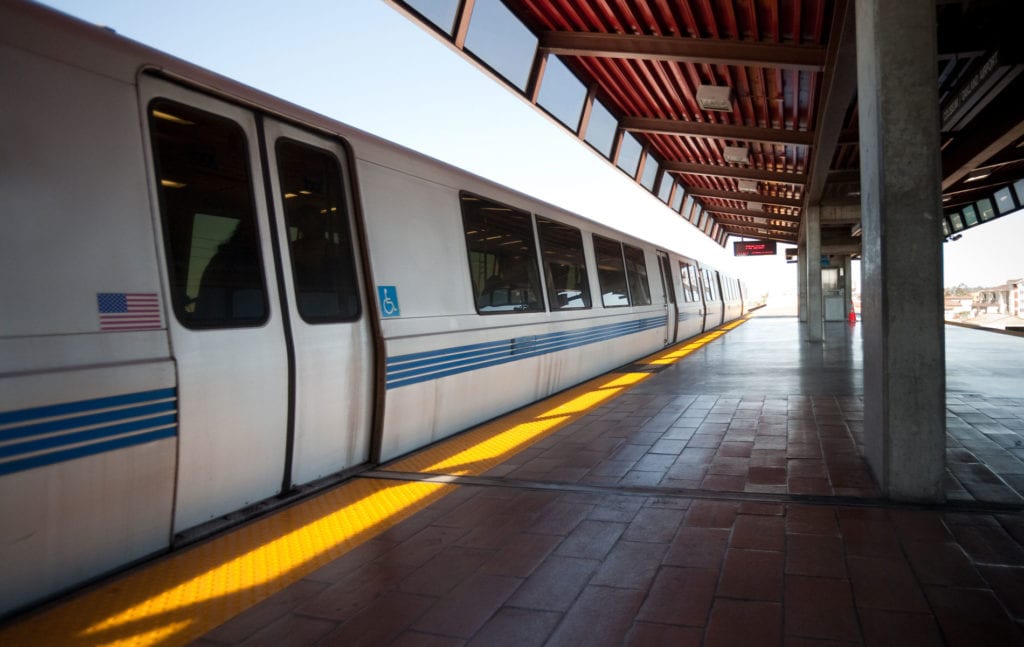
Life in the Bay Area has definitely been upended by the pandemic. Last August, demand for public transport plummeted by 80 percent since many people sheltered at home. Now that public transit has reopened, over two dozen transit agencies in nine counties have come up with the Riding Together plan, which aims to ensure riders’ safety. Read on to see how Bay Area transit protocols have changed under the pandemic.
Safety first
The state of California requires all riders to don face coverings while using public transit. They are also encouraged to stay at least three feet away from each other, to avoid talking and singing, and to use the Clipper card, which is a touchless payment method.
BART riders are encouraged to use a personal hand strap so that they can avoid clinging on to train poles while riding the BART. The hand straps can be bought for $5 plus tax on BART’s online store, www.railgoods.com, or ordered via the phone by calling 510-464-7136. Riders can also buy a personal hand strap at the Lake Merritt Station Customer Service from Monday-Friday, 7:30 am – 4:45 pm.
BART has also committed to running long trains and increasing train frequency.
Expect transit stations to be cleaned and disinfected more often. This will also help discourage groups of people from gathering in places like station platforms or elevators.
Transit workers have been given personal protective equipment and they must undergo a COVID-19 assessment before entering a transit facility or running a vehicle. Should a transit employee test positive for coronavirus, transit agencies will do contract tracing.
The San Francisco Municipal Transportation Agency (SFMTA) will also ensure that subway and light rail cars and buses will receive adequate ventilation, to halt the airborne spread of COVID-19 and encourage the continued flow of fresh air. Riders have been requested to keep bus windows open unless a bus operator allows them to close some windows.
Transit agencies must submit monthly reports containing data on mask-wearing compliance among riders and staff, commuter counts, and contact tracing of infected employees. This data will be published on the Metropolitan Transportation Commission website.
Meeting commuters’ needs
The SMFTA has also reconfigured the transit system to meet commuters’ needs. Based on travel pattern data and demographics, financial district routes have been diverted to places like Chinatown, where the demand for public transport remains strong.
Despite the overall plummeting use of public transport, bus lines used by essential workers only reported a 30% decrease. Thus, bus lines will continue to serve commercial districts inside neighborhoods, as well as large institutions like hospitals.
Like many other bus lines, AC Transit began its multiphase reopening last August. Eventually, it hopes to reinstate service to 75% of pre-pandemic levels. AC Transit also started a new rapid bus service called Tempo during the same month.
Meanwhile, the San Francisco Bay Ferry’s Alameda and Oakland service is implementing a Seaplane Shift that’s meant to increase the capacity and provide better access and parking for Alameda ferry commuters, and speed up the ferry transit for Oakland commuters.
Slow Streets success
One silver lining to the pandemic is the successful implementation of the Slow Streets program. Ninety percent of San Franciscans approve of the program, which now spans 38 miles of mostly car-free streets. Under the Slow Streets program, selected lower-traffic residential streets are partially closed to through traffic so that residents have more space to dine outdoors, play with their families, and do outdoor exercise. Emergency vehicles, as well as cars belonging to residents and businesses on regarded streets, are still allowed to enter the road.
San Francisco residents can also use these streets to safely social distance while walking, jogging, or biking to their destinations. More than 20 Slow Street corridors have already been implemented, and the latest set of Slow Streets were rolled out at the end of October. The SFMTA envisions a family-friendly network that will allow residents to reach their workplaces and other essential destinations without having to ride a car or use public transport. Buoyed by positive feedback, the SFMTA is already eyeing a fourth phase of the Slow Streets program.
San Francisco’s transit protocols may have changed, but the city remains one of the easiest places to get around in even without a car. If you’re thinking of moving to this lovely city and you’re looking for the best real estate agents in San Francisco, get in touch with Nina Hatvany and her team of experienced San Francisco Realtors today. Call 415.710.6462 or send an email to team(at)teamhatvany(dotted)com.